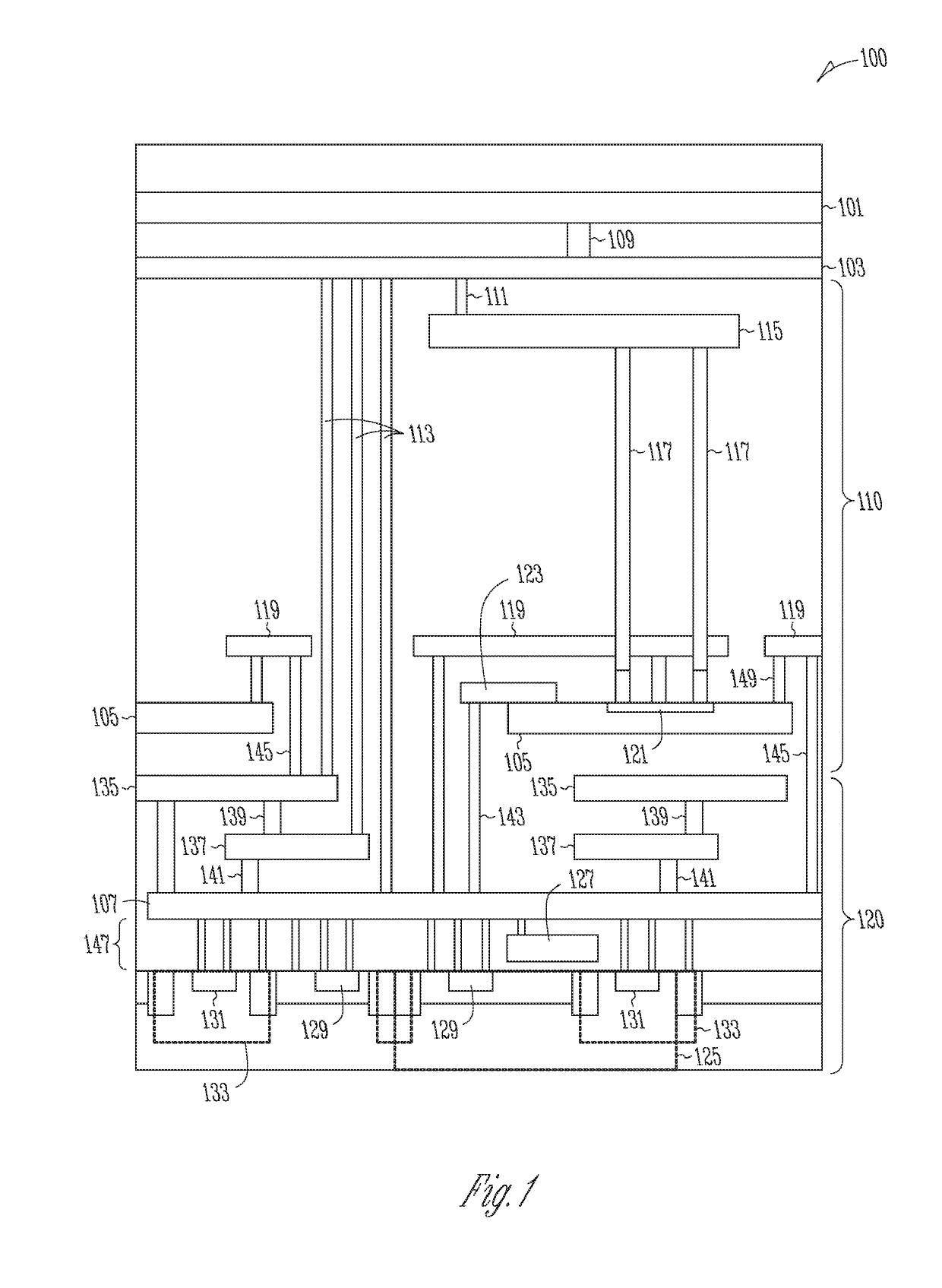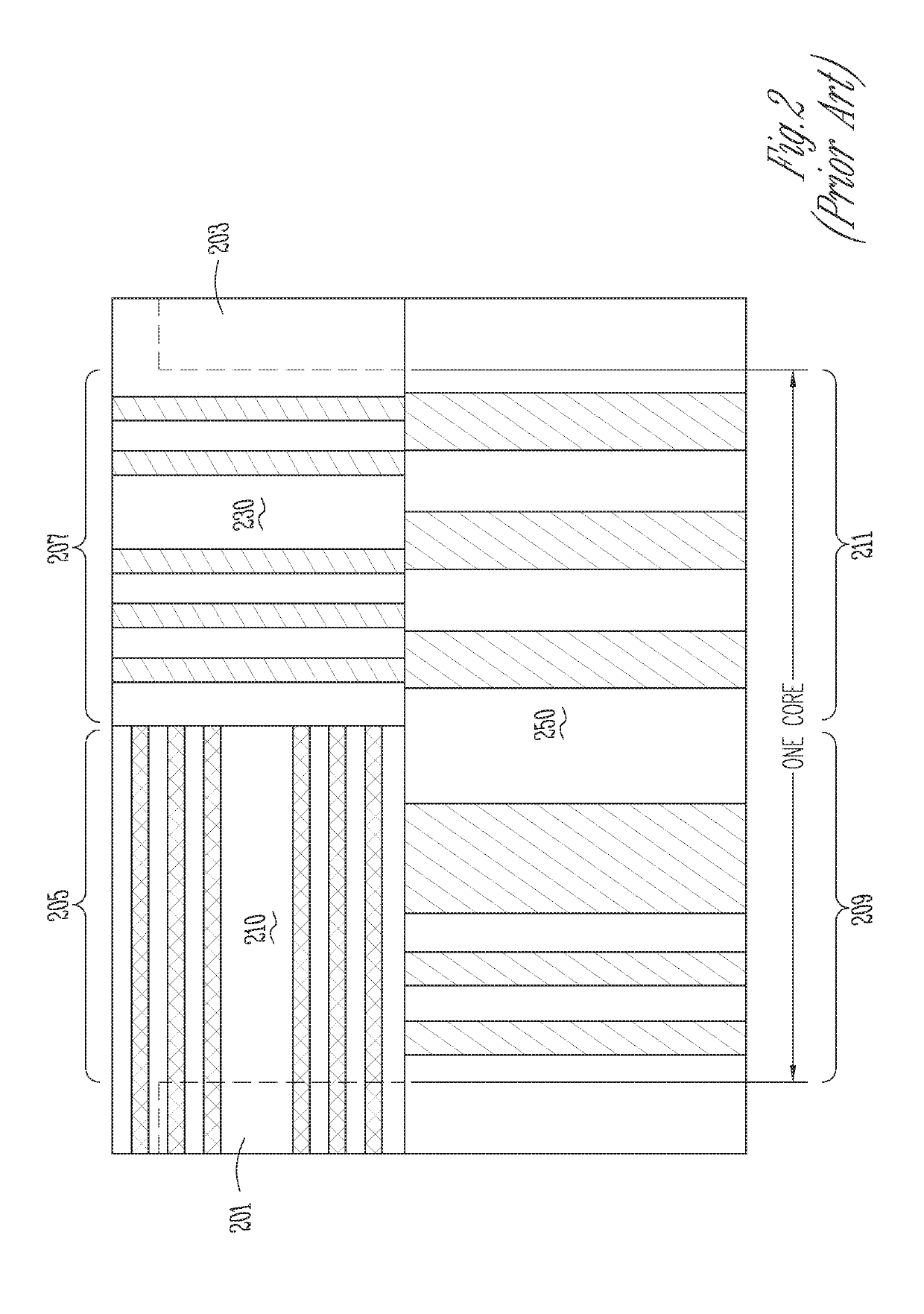Peripheral logic circuits under dram memory arrays
- Summary
- Abstract
- Description
- Claims
- Application Information
AI Technical Summary
Benefits of technology
Problems solved by technology
Method used
Image
Examples
Embodiment Construction
[0011]In an effort to improve array efficiency (e.g., defined herein as a true memory size / total die size) on DRAM memory designs, an approach called peripheral circuit logic under the DRAM memory array is disclosed herein. With shrinking geometries of DRAM memory devices, the number of common manufacturing masks between peripheral circuits (e.g., data driver circuits and other circuits) and an associated memory array has been reduced significantly in recent years. Consequently, placing peripheral circuits under the memory array has become a viable fabrication alternative. While highly-generalized forms of the peripheral circuits under a DRAM memory array concept comes from NAND and other cross-point memory devices where it has been implemented, there are distinct differences between DRAM and other memory types, described in detail below, that have previously proved to be too challenging to implement for DRAM devices. For example, DRAM memory devices store information on capacitors ...
PUM
 Login to View More
Login to View More Abstract
Description
Claims
Application Information
 Login to View More
Login to View More - R&D
- Intellectual Property
- Life Sciences
- Materials
- Tech Scout
- Unparalleled Data Quality
- Higher Quality Content
- 60% Fewer Hallucinations
Browse by: Latest US Patents, China's latest patents, Technical Efficacy Thesaurus, Application Domain, Technology Topic, Popular Technical Reports.
© 2025 PatSnap. All rights reserved.Legal|Privacy policy|Modern Slavery Act Transparency Statement|Sitemap|About US| Contact US: help@patsnap.com



